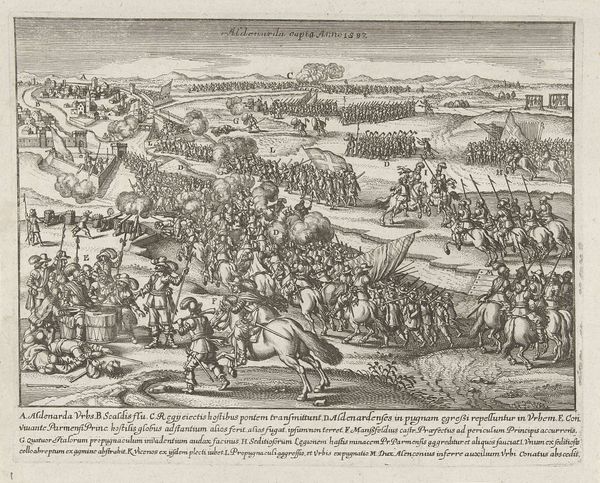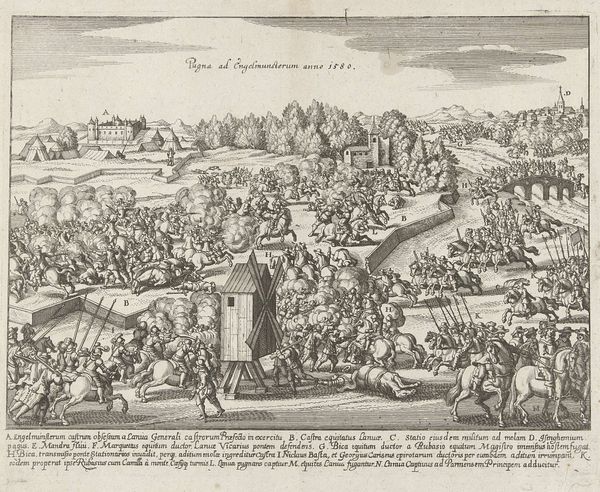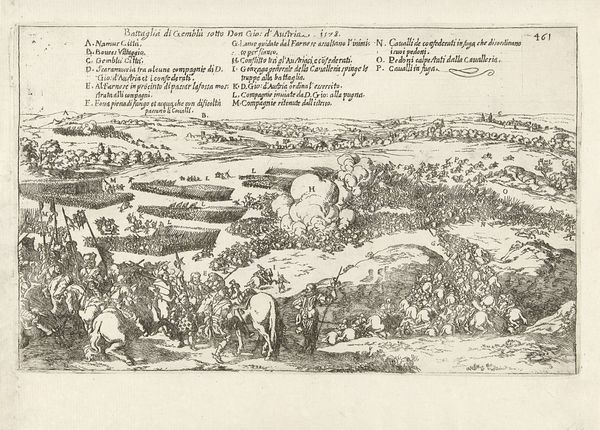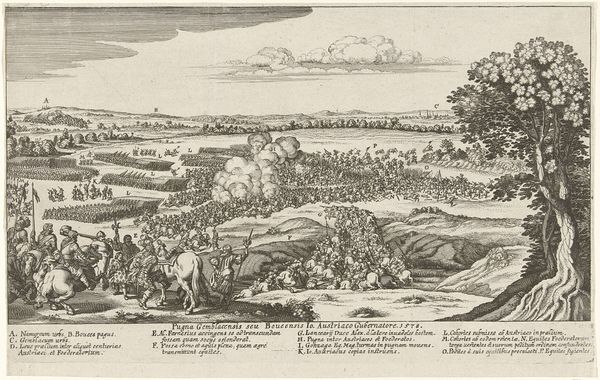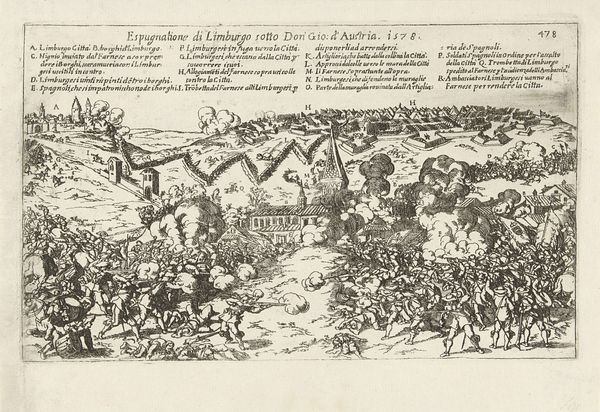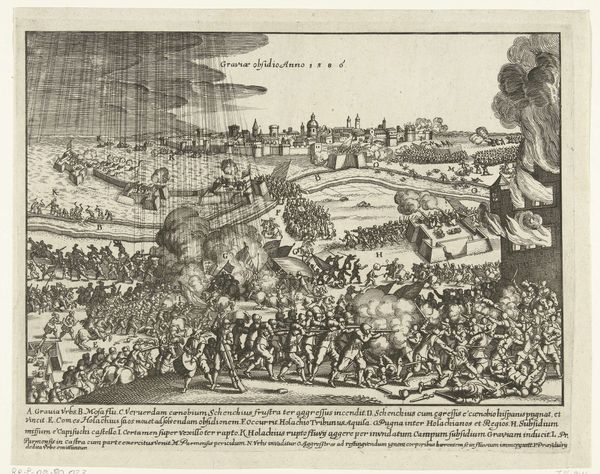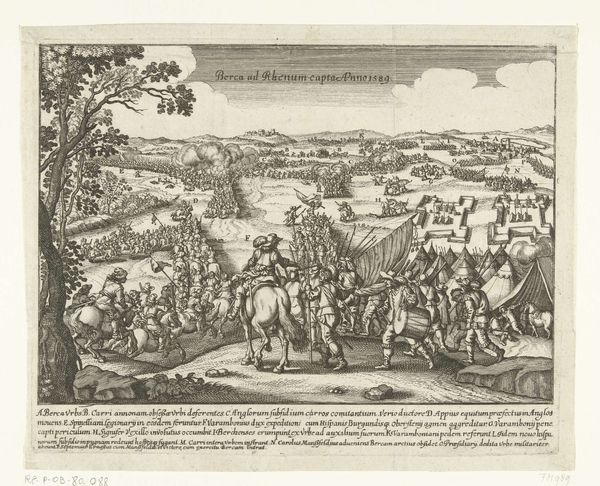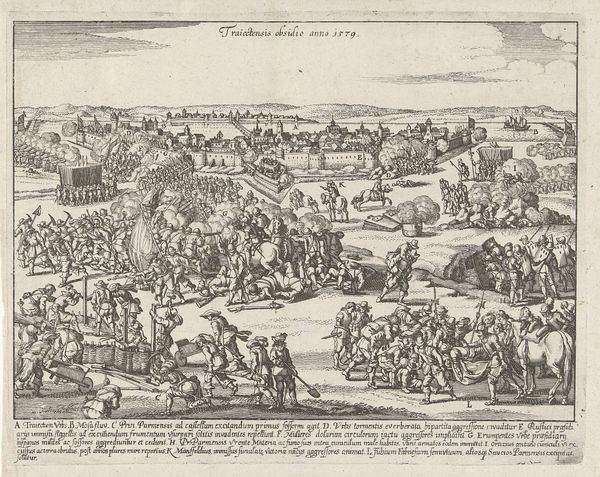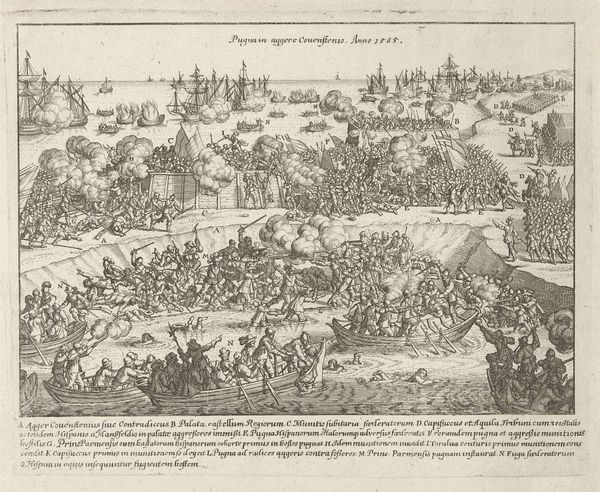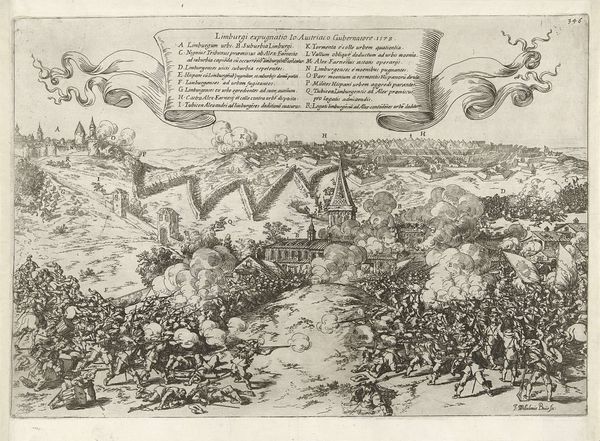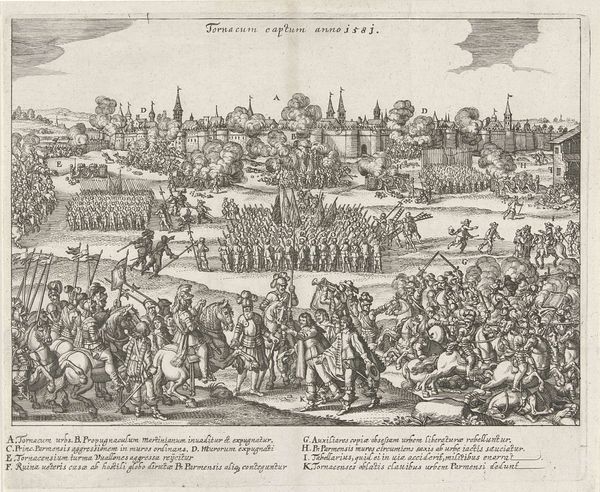
print, engraving
#
narrative-art
#
baroque
# print
#
old engraving style
#
landscape
#
cityscape
#
history-painting
#
engraving
Dimensions: height 255 mm, width 277 mm
Copyright: Rijks Museum: Open Domain
Curator: Look here; this print, dated between 1649 and 1651, depicts the 'Conquest of the City of Limburg, 1578.' The artist, alas, is unknown. The work resides at the Rijksmuseum. Editor: My immediate impression? Chaotic. The eye struggles to find a restful space amid all the battling figures and billowing smoke. The engraving itself has a stark quality; everything rendered in high contrast. Curator: It certainly captures a dynamic historical event. You see the meticulously rendered fortifications, the throngs of soldiers engaged in combat, all contributing to this layered composition. Observe how the engraver employs line to define forms and create textures, despite being a relatively simple medium. Editor: The social implications leap out, don't they? It illustrates the exertion of power. The work acts as a form of political rhetoric, demonstrating and probably even glorifying, a specific viewpoint on conflict. Think about who would have commissioned or purchased this piece. What was the public's intended response? Curator: Indeed. But on a formal level, notice the carefully organized chaos. See the way the composition directs our gaze. There is a tension and a harmony, pushing and pulling to draw us to certain focal points across the busy scene. The eye journeys and is always driven on through strategic deployments of texture. Editor: And the inscription, labeling every component of the siege like a war map? A key that anchors us to a precise historical narrative, justifying actions. The museum context elevates this from reportage to something with greater public import, prompting a critical analysis of such historical depictions. Curator: True. Through the orchestration of pictorial elements, we also find a discourse around war as an idea, moving past this singular conquest and touching on themes of struggle, strategy and resolution. It's an exemplar in the visual vocabulary of the period. Editor: The very existence of this print allows us to investigate how political messaging was visually transmitted in early modern Europe and how museums participate in creating our collective memory. Curator: A remarkable intersection between technique and history—a worthy example. Editor: Indeed, bringing context and composition into a fruitful dialogue, revealing multiple layers to history itself.
Comments
No comments
Be the first to comment and join the conversation on the ultimate creative platform.
